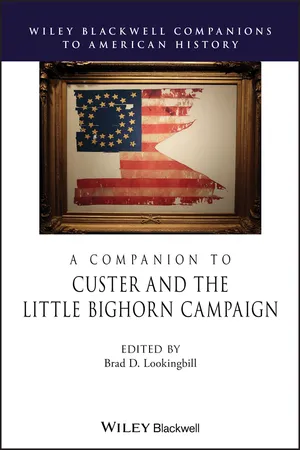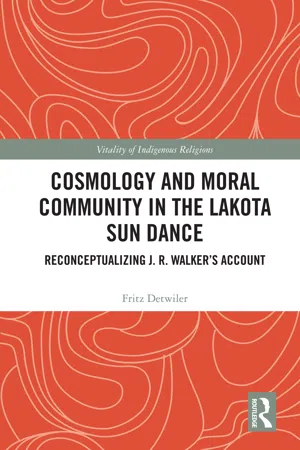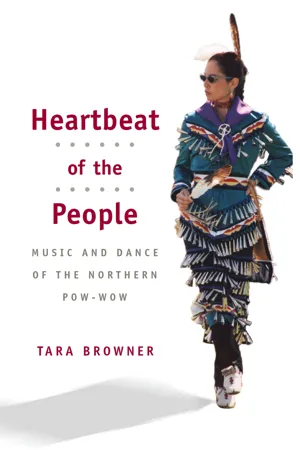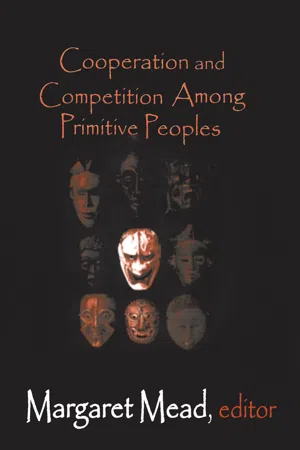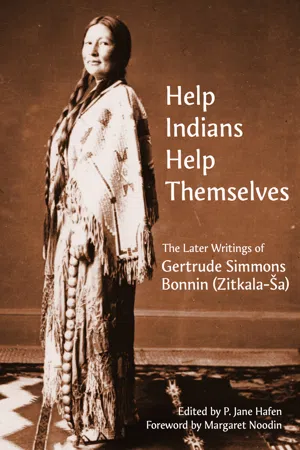History
The Sioux
The Sioux, also known as the Lakota, Dakota, and Nakota, are a group of Native American tribes who traditionally lived on the Great Plains of North America. They are known for their rich cultural heritage, including their nomadic lifestyle, buffalo hunting, and spiritual traditions. The Sioux played a significant role in the history of the American West, particularly during the conflicts with European settlers and the US government.
Written by Perlego with AI-assistance
Related key terms
6 Key excerpts on "The Sioux"
- eBook - ePub
- Andrea M. Page(Author)
- 2017(Publication Date)
- Pelican Publishing(Publisher)
Nations, or tribes. Each Native American tribe has their own unique culture and language. For centuries, the nomadic people of The Sioux tribes thrived, living peacefully and productively on the land. Then, when European traders explored the Great Plains and white settlers moved in, their traditional life changed.Native Americans take pride in the names given to them. One name, though, has been a source of confusion. The name “Sioux” was derived from the Ojibwe word “Nadowessi,” which is literally translated as “snake.” French trappers encountered the word and added “oux” to the ending, which made the word plural. Eventually, the term was shortened to “Sioux.” This now-familiar word has been known for centuries. However, the people of the Great Sioux Nation prefer to be known as either Lakota, Dakota, or Nakota.Originally, there were seven bands of the Great Sioux Nation joined together in a structured relationship known as Oceti Sakowin, or the Seven Council Fires. From there, an additional three subdivisions of the tribe are based on the dialect of the language, namely the Lakota, Dakota, or Nakota.Lakota people, the prairie dwellers, are referred to as the Teton Lakota. There are seven bands of the Lakota: Oglala, Sicangu, Hunkpapa, Minneconjous, Sihasapa, Itazipacola, and Oohenupa. The Dakota, also called Santee Sioux, consist of four bands: Mdewakantonwon, Wahpeton, Wahpekute, and Sisseton. The Nakota, or the Yankton Sioux, have three bands: Yankton, Upper Yanktonai, and Lower Yanktonai.Each band of the Lakota, Dakota, and Nakota can be further divided into groups known as their tiyospaye . Members of a tiyospaye , or the family community that lives together, are related by blood, marriage, or adoption. These many divisions of the Great Sioux Nation have one thing in common: they all consider children the main focus of the family.Sioux culture was, and is, based on the idea of kinship. At a very early age, children learned the ways of Sioux life from their tiyospaye - Brad D. Lookingbill, Brad D. Lookingbill(Authors)
- 2015(Publication Date)
- Wiley-Blackwell(Publisher)
Five Indian Tribes of the Upper Missouri (1961). Denig gathered material for his book for more than 20 years starting in the 1830s. His work is still considered to be one of the classics in Native American studies (see DeMallie 1975; DeMallie & Parks 2003; DeMallie 2001a, 718–722). An interesting early nineteenth-century description comes from the explorers Meriwether Lewis and William Clark, who described The Sioux as “the vilest miscreants of the savage race.” The Lakotas were the only tribe with whom they nearly had a serious engagement during their two-year trek across the continent. Still, they too describe them as “stout and bold looking people” (Bergon 1989, 40; Ostler 2004, 13–21).Neighboring tribes of The Sioux called them nadowessiwak, “little snakes.” Sometimes the word has also been translated as “enemy.” In any case, the French turned this Ojibwa word into Sioux, which is still the collective term used for these tribes.The Sioux, however, were and are not a unified nation but a loose group known as the Seven Council Fires, Ochethi šakowin. The Seven Council Fires is the mythological origin of all The Sioux people. According to The Sioux, seven tribes formed a fire of seven councils in ancient times. The tribes drifted apart so that each tribe selected its own leaders and living areas, but they maintained relations with each other.This relationship is most clearly seen in The Sioux language, which has three dialects, Dakhóta, Nakhóta and Lakhóta. People speaking different dialects can understand each other. The Dakhóta-speaking Santees, Yanktons, and Yanktonais form the eastern branch of The Sioux. Traditionally, it has been assumed that the Yanktons and the Yanktonai speak Nakhóta, but the latest linguistic and anthropological studies show that Nakhóta is rather spoken by distinct relatives of The Sioux, the Assiniboine Indians of Montana, Alberta, Saskatchewan, and Manitoba. Lakhóta is spoken by the western branch of The Sioux, the Lakotas (lakhota). The Lakotas are also known by the name Teton, coming from the Lakota word thithunwan (“dwellers on the plains”). The Lakotas are divided into seven tribes (oyate- eBook - ePub
Cosmology and Moral Community in the Lakota Sun Dance
Reconceptualizing J. R. Walker's Account
- Fritz Detwiler(Author)
- 2021(Publication Date)
- Routledge(Publisher)
The Lakota are relatives of both the Dakota and Nakota, all of whom speak dialects of the same language family. By the mid-nineteenth century, Dakotas were the easternmost group, settling in present-day Minnesota near the Mississippi River’s headwaters. By that time, the Lakota had moved to the grasslands and upper Great Plains region while the Nakotas lived in between the two other groups. Today, they have separate reservations, although movement among them and into urban areas is somewhat fluid. All three groups have similar social organizations and share similar worldviews and lifeways.Seven social divisions comprise the Lakota: the Oglala (Oglála), the Brulé (Sicháŋǧu), the Hunkpapa (Húŋkpapha), Minneconjou (Mnikówožu), Sans Arc (Itázipcho), Blackfeet (Sihásapa), and Two Kettles (Oóhenuŋpa) (Hollabaugh, 2017). Collectively they encompass the Očhéthi Šakówiŋ, or Seven Fireplaces, a noncentralized coalition that functions as a unit only in times of crisis or to coordinate shared policies in dealing with outsiders. The Očhéthi Šakówiŋ is broken down into smaller units: oyáte, thióšpaye, wičhóthi, and thiwáhe, based on size and degrees of relatedness. According to Walker, the smallest and most closely related unit is thiwáhe, or the immediate family, with each thiwáhe made up of one or more tipis.7 Wičhóthi is a gathering of two or more thiwáhes, usually members of the extended family.Walker notes that the wičhóthi needed to be sufficiently large enough to fulfill a number of civic and ceremonial roles. As the relational circle extends, thióšpayes are groups of families related by blood, marriage, or adoption. The largest grouping is oyáte or Lakota Nation (Walker, 1917). According to Powers, the Oglala, who are the focus of Walker’s materials, comprise seven thióšpayes. They were the Payabya (Pushed Aside), Tapišleca (Split Liver or Spleen), Kiyaksa (Breaks the Rule or “Cut Band”), Wajaje (Osage), Itešica (Bad Faces), Oyuȟpe (Untidy), and Wagluȟe (Loafers) (Powers, 2001).8 - eBook - ePub
Heartbeat of the People
Music and Dance of the Northern Pow-wow
- Tara Browner(Author)
- 2022(Publication Date)
- University of Illinois Press(Publisher)
chapter 5 are members of the Pine Ridge Oglala Lakota Nation, whose reservation is located in southwestern South Dakota. When considered as a cultural unit along with the Dakota and Nakota, the Lakota are part of the Great Sioux Nation that once stretched from central Minnesota though the Dakotas, Wyoming, and parts of Kansas and Colorado. The Sioux were the most powerful single political entity on the Northern Plains in the not-so-distant past and had enormous influence on the region’s music and dance practices.The map of the United States shows the marked regions of Pow-Wow styles and tribal areas.Figure 1. Pow-wow Styles and Tribal AreasAccording to Lakota tradition, they originated as a people from Wind Cave in Paha Sapa (the Black Hills) of South Dakota, living first underground and then, as they emerged from the cave into the sunlight, following the buffalo. After centuries of life as a mobile people, moving from the Great Plains to the Eastern Woodlands and back again, they were visited by the White Buffalo Calf Woman, who presented them with a Sacred Pipe, a number of ceremonies, and songs to perform during these ceremonies. The pipe is now kept (“carried”) by Arvol Looking-Horse, a member of the original family charged by White Buffalo Calf Woman with holding it.7 In traditional Lakota religious life, the pipe is used for prayer, and the smoke serves as an offering to the spirits and Tunkashila (Grandfather). Because of the physical and spiritual geography of the land where they live—it is their origin place and where their creator gave them the central elements of their religions—the Lakota fought fiercely to protect it.In the Lakota language, waci means the act of dancing, and wacipi - Margaret Mead(Author)
- 2018(Publication Date)
- Routledge(Publisher)
CHAPTER XIITHE DAKOTA
by Jeannette MirskyThe Teton Dakota numbered in 1910 about 14, 500 persons. Their territory embraces an area which, with the Missouri River as its eastern boundary, covers the entire western part of South Dakota and goes far into Montana and Wyoming and down into Nebraska. They are divided into seven bands, of which the Oglala and Brules are the largest, together accounting for about half the entire population. They are now living on seven reservations in this area. Members of all bands are found on each reservation, though each has its headquarters where its members predominate. They all speak the same dialect of the Siouan language.Economic Background
The Teton Dakota, like many others Plains Indians of North America, depended for their food, clothing, and shelter on the buffalo and other animals they hunted. They had no agriculture, but supplemented their meat diet with wild turnip, wild fruits, and berries of all kinds. During the winter and spring the people lived in encampments. These were more or less constant units composed of people from various bands who found it convenient to rove together hunting small game. There was no competition in securing food, and each family could leave the encampment freely for short periods in order to be better able to secure game.The women dressed the skins of the animals, making them into clothes, tepee coverings, bags, and pouches, and even into containers in which cooking was done, and many of these articles they ornamented with porcupine quillwork. It was the women who prepared the food so that it could be kept and carried with them as they traveled about. Meat was jerked, dried, and cached, or it was dehydrated and pounded into pemmican. But even with these methods for preserving food, these wandering, hunting people were often faced during the winter with times of scarcity, and it was usually at such times that small units would leave the encampment to hunt.The Dakota had horses. They were used in hunting, in warfare, and in the transportation of goods. Since no Plains Indian had any sense of ownership as regards land, they were also the most important form of property. Well-broken horses were owned by everyone and many were stolen from other tribes, this being the honorable method by which a young man was expected to make his start in life. He could not expect to inherit horses from his father, for at death a person’s property was distributed outside the immediate family.- eBook - ePub
"Help Indians Help Themselves"
The Later Writings of Gertrude Simmons-Bonnin (Zitkala-Ša)
- P. Jane Hafen(Author)
- 2020(Publication Date)
- Texas Tech University Press(Publisher)
Well might the Great Chief, Red Cloud, have asked, “What right has France across the sea, to sell my land?” All the while treaties were being made with the Indians, the Indian was laboring under the delusion that our government recognized the Indian’s fee in his own lands. This misunderstanding has made their inevitable disappointment the more bitter. Such a subtle discrepancy consistently followed through the centuries, can never be a mark of superiority of any race. It is merely a self-delusion — so The Sioux believes.Cupidity of the whiteman to gain the whole world has led him to commit atrocious blunders against other races, even brother against brother, while carrying his bible under one arm and gun powder under the other. It was cupidity of the Whiteman, in the latter part of the 19th century, that prevailed upon the War Department to make war upon the peaceful roaming Sioux.General Miles,10 who fought The Sioux, is quoted as adding his testimony that he had never known an Indian war in which the Whiteman was not the aggressor. The Sioux never broke their pledges but the Whiteman did. This caused the numerous Sioux wars.By a military campaign, The Sioux were driven into small reservations, out of which they were never to go again without a pass — never again as free men. Had it meant Americanization in the sense that the Indian’s entity was to be recognized in the constitution of the United States, equal to other Americans; and while held as a dependent people, they were to receive legal protection extended to foreigners, naturalized or otherwise, it would have been in harmony with established custom of civilized races of the earth. It was not so however. The Indians were placed under a despotic bureaucracy; and there they are today. In vain did Sitting Bull protest, “God Almighty made me an Indian but never a reservation Indian!”A Government commission called to negotiate with The Sioux, to transfer them to Indian Territory — oil wells of Oklahoma — not then discovered, failed of its purpose. Then sharp shooters were paid to kill off the buffalo herds in order to starve these freedom loving, obstinate Sioux into bondage, because the white men coveted his country. By these drastic measures the greater part of The Sioux nation was placed under government control. “We are told” said Chief Red Cloud, who valiantly defended his people’s cause, “We are told Spotted Tail has consented to be correled [ sic ]
Index pages curate the most relevant extracts from our library of academic textbooks. They’ve been created using an in-house natural language model (NLM), each adding context and meaning to key research topics.

